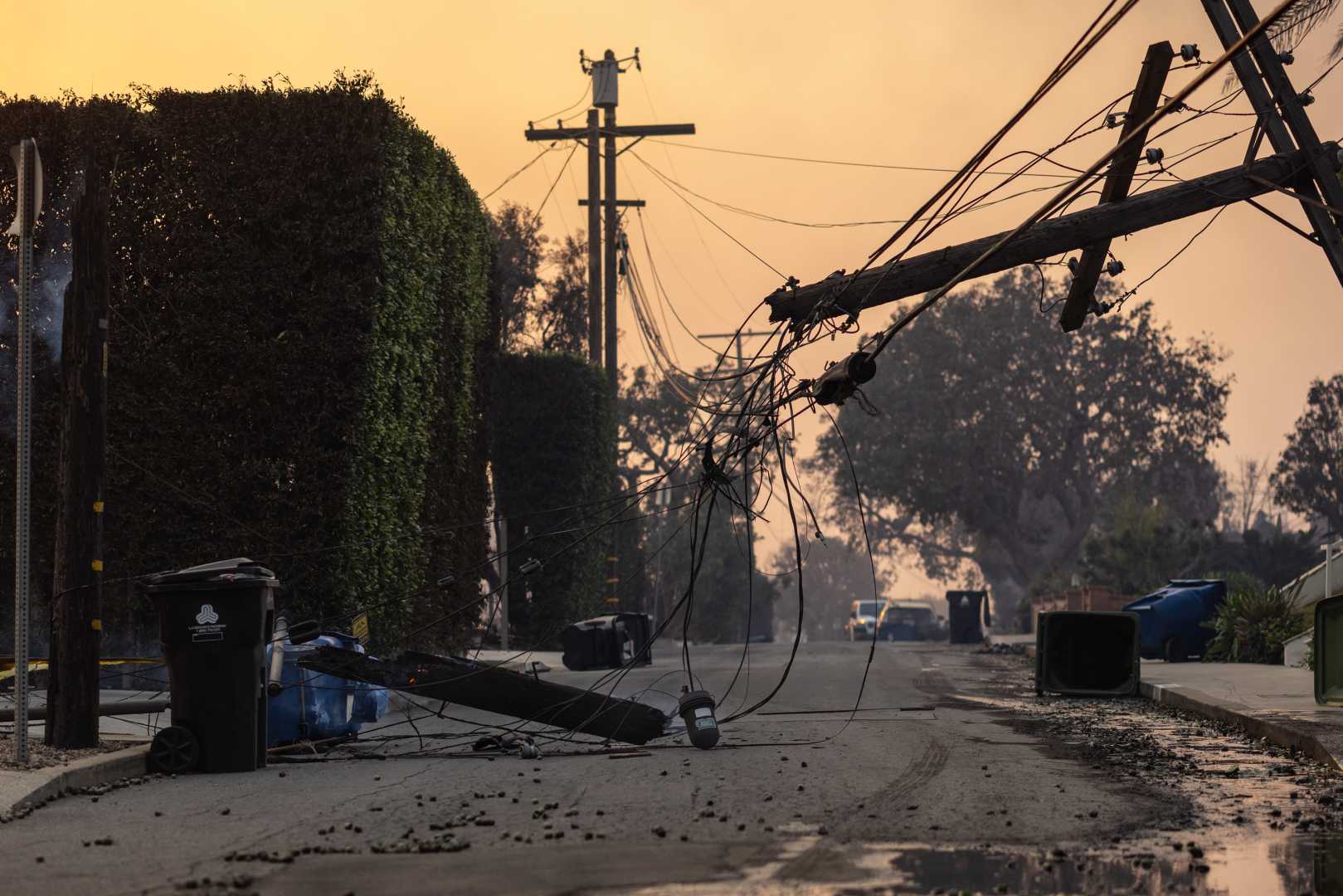News
Power Grid Faults Spiked Before Los Angeles Wildfires, Data Shows

LOS ANGELES, Calif. — A sharp increase in power grid faults was detected in the hours before three major wildfires erupted in Los Angeles County this week, according to data from Whisker Labs, a company that monitors electrical activity. The Eaton, Palisades, and Hurst fires, which have collectively destroyed thousands of structures, were preceded by significant spikes in electrical faults in the affected areas, the company reported.
Bob Marshall, CEO of Whisker Labs, told Fox News Digital that the company’s network of approximately 14,000 “ting” sensors recorded 63 faults in the Palisades area in the two to three hours before the fire began. Similarly, 317 faults were detected near the Eaton Fire, and 230 faults were recorded near the Hurst Fire. On a typical day, such faults are rare, Marshall noted.
Faults on the power grid are often caused by tree limbs touching wires, wires colliding due to high winds, or faulty equipment. These faults can generate sparks that ignite dry vegetation, especially during extreme weather conditions like the Santa Ana winds that swept through Los Angeles this week. “Faults are caused by tree limbs touching wires or wires blowing in the wind and touching. That creates a spark in a fault, and we detect all of those things,” Marshall explained.
Despite the alarming data, Marshall emphasized that the company cannot definitively link the faults to the ignition of the fires. “What we know from our data is that there were increasing faults in the grid in the area around where those fires ignited,” he said. “But we can’t say definitively whether one of those faults caused a fire.”
Whisker Labs’ sensors, installed in homes across Los Angeles, provide real-time monitoring of electrical activity with “extraordinary precision and accuracy.” The company has shared its findings with utility companies, but the data is not currently being used to inform grid management decisions. Marshall said the sensors can prevent 80% of potential house fires by alerting homeowners to power surges and faults.
The Los Angeles Department of Water and Power (LADWP) did not proactively shut off power in the affected areas ahead of the wildfires, a preventative measure employed by other California utilities during high-risk conditions. An LADWP spokesperson told The Wall Street Journal that the department relies on other safety measures, such as disabling automatic power restoration after outages, to mitigate fire risks.
Investigators have yet to determine the exact cause of the fires, which have devastated large swaths of Los Angeles County. The California Department of Forestry and Fire Protection and local fire agencies are examining all possible ignition sources, including power lines and human activity. “There’s a number of different activities in [Eaton Canyon],” said Robert Garcia, Angeles National Forest fire chief. “We have teams looking at all [possible starts].”
As the fires continue to rage, the data from Whisker Labs may provide critical insights into the role of electrical faults in wildfire ignition, potentially shaping future fire prevention strategies.












